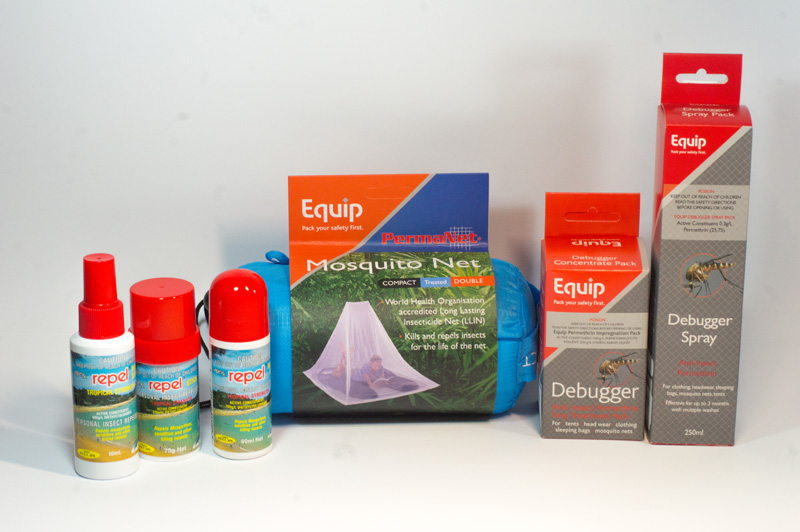
An excellent question! There are a number of insect repellents on the market but for most of them little science to back up their claims of effectiveness. You probably all have a favourite that you claim works a charm, but the consequences of being bitten in your back garden pale in significance to the implications of being bitten by a mosquito carrying malaria, Zika or Dengue (just to name a few). The following personal insect repellents however have been proven scientifically to work and as such we feel comfortable recommending them.
DEET containing repellents are the most popular and effective. Strength varies from below 10% up to 80%. However contrary to expectation, strongest is not necessarily best and duration of effectiveness levels off at around 50%. Whilst there is a theoretical risk of toxicity with repeated application of very high strength repellents, DEET at 30% is safe and effective. We recommend and stock a 30% strength product called Repel, which is reapplied every 4-6 hours, is relatively water resistant, and approved for use in children as young as 2 months of age. Lower concentrations of DEET can be found in other products such as RID and Repel Jnr, but need applying at least 2 hourly.
Sensitivity to DEET is rare, but if it occurs Picaridin is the main alternative. Relatively new to the Australian market, repellents containing Picaridin are not always easy to find but we do stock a couple of brands for those that prefer it. Oil of lemon eucalyptus and IR3535 are also agents that have been proven effective, but are not readily accessible in Australia at this time.
Quick Tip: Although you can buy products that contain both insect repellent and sunscreen, we generally recommend buying a good brand of each. Apply your sunscreen first and then your insect repellent 30 minutes later.